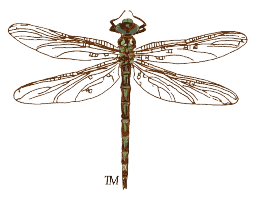Wild Hogs - A Few F.A.Q.s
From a Texas A&M AgriLife Extension article. Click here for the whole article – all 50 questions.
How many they average per litter and how often they can breed in a year?
The wild pig is the most prolific large mammal on the face of the Earth—but they are not “born pregnant”! The average is between 5 and 6 pigs per litter. Sows have approximately 1.5 litters per year. Are more litters per year and larger litter sizes possible? Absolutely yes! However, I am using long-term averages, not what can occur under ideal conditions –which usually unsustainable over the long haul. Young females do not typically have their first litter until they are 13+ months of age, even though they can be sexually mature at 6 to 8 months of age or even earlier in some cases.
How heavy can they get?
Weights depend on genetic background and food availability. Generally, males can reach larger weights than females but this is not a hard and fast rule. Average weights vary but run 200 pounds for adult males and 175 pounds for adult females. A 300 pound feral hog is a large pig. The unusually large weights of 500 pounds + occasionally reported in the media are very rare.
What’s the difference between a pig, hog and a boar, and are their different species?
All are descendants of a common ancestor-the Eurasian wild boar. The term Wild boar is typically used to describe Eurasian wild boar from Europe or Asia. Feral hogs are those that originated from domestic breeds but may be the result of a few or many, many generations in the wild. In the U.S., the best descriptor is probably to refer to them simply as wild pigs. Regardless, the Eurasians and domestics gone feral are largely the same species and therefore will interbreed with no problems resulting in all sorts of “hybrids” between the 2 groups. None of these should be confused with the javelina, a native pig-like mammal found in the American southwest that is not even closely related to wild boars/wild pigs/feral hogs. The best name to use is simply “wild pig”.
What other animal would you liken their intelligence level to, and ability to learn to avoid traps?
Wild pigs are one of the most intelligent species (exotic or native) found in the United States. They learn to avoid danger very quickly and “half-hearted” attempts to control them just make them less susceptible to future control efforts. They respond to human pressure via avoidance.
How strong is their sense of smell?
The wild pig’s sense of smell is well developed (much better than both their eyesight and hearing) and they rely strongly on it to detect danger and search out food. They are capable of sensing some odors 5-7 miles away and may be able to detect odors as much as 25 feet underground! Appealing to this tremendous sense of smell is often essentially as fermented or scented baits can provide additional attraction to make them more vulnerable to trapping.
What are their eating habits, and how much they eat in a day?
Wild pigs are opportunistic omnivores, meaning they feed on plant and animal matter in addition to being able to play the role of a scavenger. They are largely indiscriminant in their feeding habits and eat both vertebrate and invertebrate animals. Approximately 85% to 90% of their diet is believed to be composed of vegetation (including crops where available) and 10% animal matter. Small pigs may eat approximately 5% of their body weight daily; larger pigs an estimated 3 % of body weight.
Where are the worst damage problems in Texas?
Anywhere we have wild pig populations we seem to have problems. From an agriculture standpoint, cropland damage results in higher economic impact than rangelands or pasturelands. More recently, damage to greenscapes in urban and suburban settings have resulted in considerable economic impacts as well.
What so they do to damage trees specifically?
The most sensitive environmental areas wild pigs damage are wetland areas and they can alter the vegetative community present. They compete with native wildlife for hard mast (e.g., acorns from oak trees). Their rooting can accelerate leaf litter decomposition causing the loss of nutrients which can impact seedling survival of trees. Their rooting behavior can damage seedling tree growth and survival. Longleaf pine seedlings seem to be especially vulnerable to wild pigs. Research suggests that the pigs may actually root up seedlings of various tree species and chew the root system to obtain nutrients. They rub against individual trees (pines) that are capable of producing a lot of rosin (presumably as they rub to remove ectoparasites on their skin). Rubbing of selected pine trees has resulted in girdling of some mature trees which can eventually kill the tree.
What are some other sources of information on wild pigs?
Here is everything you need to know about hogs in one article by TPWD:
The Feral Hog in Texas by Rick Taylor, Wildlife Biologist
Texas A&M AgriLife Extension’s wild pig website: http://feralhogs.tamu.edu
National Wild Pig Community of Practice website: www.extension.org/feral_hogs

